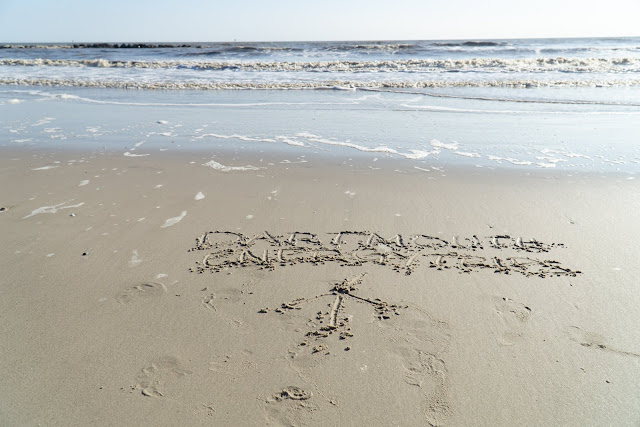New Orleans, Day One
Academia and Industry

Our day at Tulane University brought us to the center of academic thought on how the energy industry shapes the lives of people in the Gulf and beyond. Our day started off with a lecture by Professor Eric Smith of Tulane's Freeman School of Business. Drawing from his experience in the oil and gas industry, Professor Smith gave an overview of the upstream, midstream, and downstream sectors of oil, with special attention to the ways in which sociopolitical factors have historically changed the industry and continue to shape its evolution. I was particularly interested in the history Professor Smith gave on the effects of the OPEC oil embargo, which resulted in an oil crisis in the United States and spurred motivation for greater U.S. energy self-sufficiency and the subsequent construction of the Trans-Alaska Pipeline. Similar catalysts for pipeline construction can be seen today, with concern over dependence on Russian gas to power New England reigniting calls for increased independence from foreign producers. However, as Professor Smith himself said, energy is an inherently international industry and will continue to be. Recent moves by the Trump administration to impose tariffs on Chinese energy exports (China is a large recipient of excess U.S. production of American shale fuel) raise questions on the changing sociopolitical factors of an industry than generally doesn’t like taxes or tariffs.

While understanding the international reach and large scope of the energy industry can feel overwhelming, in Louisiana the local effects of the industry are acutely felt and visible. Professor Lisa Jordan of the Tulane Law Clinic painted a poignant picture of the environmental degradation experienced in a state where its not uncommon to see a petrochemical plant every couple blocks and several dotting the horizon. Professor Jordan described the structural challenges to environmental protection of vulnerable populations enmeshed under laws that don’t allow private citizens to sue corporations for pollution. Building on yesterday's tour with Anne and Iris of the Bucket Brigade, Professor Jordan's presentation highlighted the human injustice enmeshed in the pursuit of capital gains by focusing on the erasure of African American communities as a result of petrochemical industry encroachment and the disproportionate environmental impacts felt by these communities. In addition, Professor Jordan explained the concept of “regulatory capture,” where state officials tasked with the enforcement of regulations of energy and petrochemical industries view their job as one more closely aligned with protecting industry and the economic benefits the industry brings. Environmental tradeoffs not withstanding, I question the extent to which the economic prosperity of energy production is felt by the people who live along the Gulf. It seems like while the Gulf is America's largest producer of energy, the region also absorbs the heaviest environmental impacts, and it's not clear that even economic concessions make up for these losses. The loose tax policies toward oil, gas, and petrochemicals in the state coupled with what locals have described as a culture of catering to the energy industry impressed upon me that what makes environmental protection of Louisiana’s coasts and swamps especially hard is that lawyers like Professor Jordan are pushed to try and fill a vacuum of enforcement in the state.

After our time at Tulane, the group drove to a park for a relaxed conversation with Jessica Link ‘17, a recent Thayer graduate. Jessica showed us around her favorite park, notable for its seamless incorporation of “green engineering.” As Jess described it, green engineering builds using natural land forms as opposed to traditional “grey engineering” that uses concrete and other man-made materials. In New Orleans, some areas of the city are experimenting with protective areas of raised land and vegetation designed as barriers to the periodic flooding experienced by the city. Open canal drainage systems inspired by Dutch engineering are also beginning to find a place in the city and point to the innovative new technologies being developed in response to the serious environmental threats faced by the city. Another proposed environmental engineering solution we’ve heard a lot about is sediment diversion through the diversion of water from the Mississippi River. We’ve heard a lot about the science behind this proposed solution for coastal restoration, but after Professor Jordan’s lecture I can’t help but wonder about the local human impacts of such a radical new measure.
Today, in conjunction with the past couple days in the state, has begun to paint a clearer image of not just the environmental impacts of the energy and petrochemical industry, but also the real and immediately felt human impacts. In Louisiana we have been exposed to the physical devastation of Louisiana’s coasts and swamps, as well as to the human costs to the energy industry. More than anything, this immersion trip has shone a light on the wide array of actors and interests represented in the debate over our energy needs. In the Gulf Coast these competing interests are physically omnipresent and uniquely visible. I doubt there exists one “big solution” to balancing our energy and environmental needs, and our needs to incorporate the voices of people and professionals on all sides of the energy debate.
--Serena Joy de la Cruz '19


Comments
Post a Comment